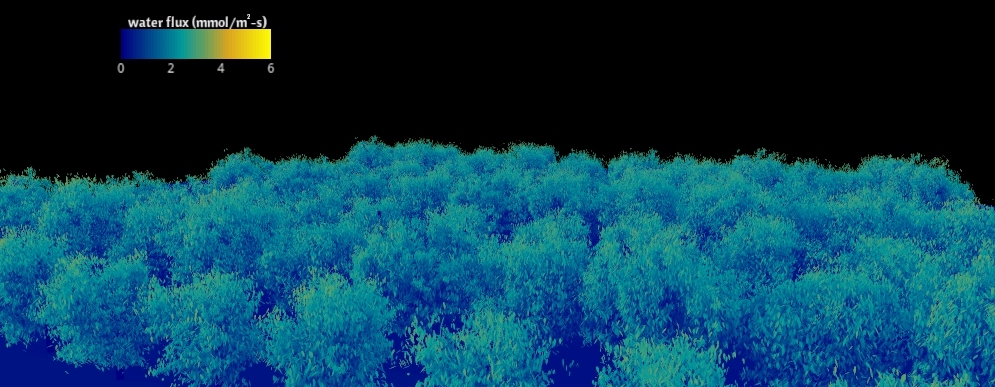
Assistant Professor Brian Bailey recognized by NSF with CAREER award
Brian Bailey, an assistant professor in the Department of Plant Sciences at the University of California, Davis, has been recognized by the National Science Foundation, or NSF, with a CAREER award.
The prestigious award – part of NSF’s Faculty Early Career Development Program – is granted to assistant professors or those in equivalent faculty positions who have the potential to serve as academic role models in research and education and to lead advances in the mission of their department or organization.
The award will provide an investment of $660,571 to support Bailey’s research project entitled, “Linking Canopy Structure and Function in Plant Water-Use Economy.”
“In terms of an economic analogy, one important cost that plants incur for the uptake of CO2 needed to produce and maintain biomass is based on the currency of water loss,” Bailey said of the project. “But the exchange rate between the two – water and carbon dioxide – varies based on weather and climate, physiological parameters and canopy structure, among other things.”
The project seeks to better understand how light availability, plant architecture, and leaf surface temperature interact to determine the efficiency of plant systems. The work will especially focus on uncovering mechanisms by which plants adjust both short-term and long-term spatial structure in response to environmental stimuli and competition.
Bailey will focus his research on perennial woody shrubs native to California, as their relatively small size permits them to be readily instrumented and grown in a controlled environment chamber.
Despite being predicated upon native plants, this research will have broader relevance to agricultural crops: Through a comprehensive understanding of how various effects interact at a systematic level for the exchange of water and carbon dioxide, this project aims to improve our ability to predict plant responses to variable climate so as to design and manage more efficient plant systems.
Past research into this area has not explicitly considered the effects of variable plant tissue temperature and canopy structure because they can be difficult to measure directly, explained Bailey, who will be using a 3D plant systems model called Helios, along with novel techniques for the measurement of plant structure, to quantify these interactions.

“It is difficult to measure biophysical processes relevant to plant water-use efficiency across leaves through canopy scales directly,” Bailey said. “We use detailed 3D models that can explicitly represent interactions between plant structure and function to complement limited measurements.”
As part of the project, two undergraduate students will develop a graphical and virtual reality interface for the Helios modeling system. The students will be able to use the modeling tools to better understand plant-environment interactions by ‘walking’ through a realistic-looking virtual canopy.
As they explore the virtual environment, they will be able to overlay predicted model values, such as light interception, and will be able to visualize how the various values change when canopy configuration is altered.
The software the students produce will then be used as the basis for a Course-Based Undergraduate Research, or CURE, course.
Congratulations to Brian Bailey for receiving the prestigious CAREER award from the NSF in recognition of his potential to serve as an academic role model in both research and education.
